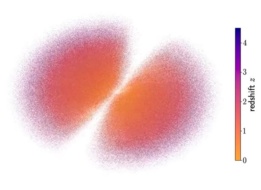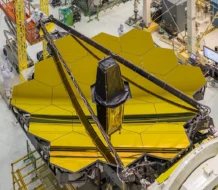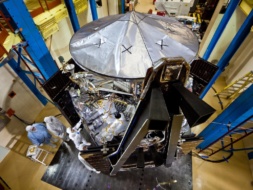Space makes a pretty good perch from which to study the Earth’s evolution over time. It’s a good enough vantage point that over the past 20 years, NASA has invested nearly a billion dollars into the development of a satellite that can help explain interactions between the ocean and atmosphere for vital climate change research.
That satellite is finally off the ground and ready to begin observations.
The PACE (Plankton, Aerosol, Climate, ocean Ecosystem) lifted off from Cape Canaveral aboard a Falcon 9 rocket in the wee hours this morning, and has since successfully entered orbit and sent a ping back to Earth to confirm it’s up and running.
“Observations and scientific research from PACE will profoundly advance our knowledge of the ocean’s role in the climate cycle,” Karen St. Germain, Earth science head at NASA HQ, said in a release.
Small matters: For an observatory positioned so far away from its target, PACE is going to be hunting for remarkably small subjects as the main crux of its research. It’s looking to measure populations of phytoplankton in the oceans and the distribution of microscopic particles in the atmosphere.
The satellite comes fitted with three instruments:
- A hyperspectral imagery instrument to measure ocean color. Phytoplankton interact with sunlight to effect subtle changes in ocean color, measurable via this very sensitive space-based imager.
- A polarimeter called the Spectro-polarimeter for Planetary Exploration (SPEXone), which measures the direction of light traveling in one plane to identify and characterize aerosols in the atmosphere.
- A second polarimeter, the Hyper Angular Research Polarimeter (HARP2), which can provide more detail on the amount, size distribution, and shape of atmospheric aerosols.
This data is intended to give scientists a better understanding of how phytoplankton populations—which absorb CO2 from the atmosphere and form the basis for much of the aquatic food chain—are affected by climate change.
What’s next: PACE is brand-new to the orbital environment, and it still has to go through commissioning before it’s ready to begin beaming home science-ready observations. From there, the satellite has a three-year nominal mission ahead, but it’s equipped with enough fuel and power to go on for 10 years.




